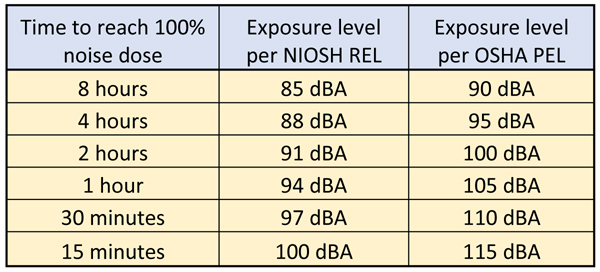Occupational hearing loss is one of the most common
work-related illnesses in the United States.
Each year, about 22 million U.S. workers are exposed to hazardous noise levels at work. Over 30 million U.S. workers are exposed to chemicals, some of which are harmful to the ear (ototoxic) and hazardous to hearing. In addition to damaging workers’ quality of life, occupational hearing loss carries a high economic price to society.
In the United States, occupational regulations and standards were established to protect workers against the health effects of exposure to hazards substances and agents when certain values (or limits) are reached.
NIOSH – Criteria for a Recommended Standard: Occupational Noise Exposure
NIOSH establishes Recommended Exposure Limits (REL) for noise based on the best available science and practice. The NIOSH REL for noise is 85 decibels, using the A-weighting frequency response (often written as dBA) over an 8-hour average, usually referred to as Time-Weighted Average (TWA). Exposures at or above this level are considered hazardous.
OSHA – Occupational noise exposure 1910.95 - External
OSHA also sets legal limits on noise exposure in the workplace. These limits are based on a worker’s time weighted average over an 8-hour day. With noise, OSHA’s permissible exposure limit (PEL) is 90 dBA for all workers for an 8-hour day. Occupational standards specify a maximum allowable daily noise dose, expressed in percentages. For example, a person exposed to 85 dBA per NIOSH or 90 dBA per OSHA over an 8-hour work shift, will reach 100% of their daily noise dose. The noise dose is based on both the sound exposure level and how long it lasts (duration) so for each increase or 3-dB (NIOSH) or 5-dB (OSHA) in noise levels, the duration of the exposure should be cut in half (this is what’s referred to as exchange rates in standards). The following table illustrates the relationship between sound exposure levels and durations for both NIOSH and OSHA.

